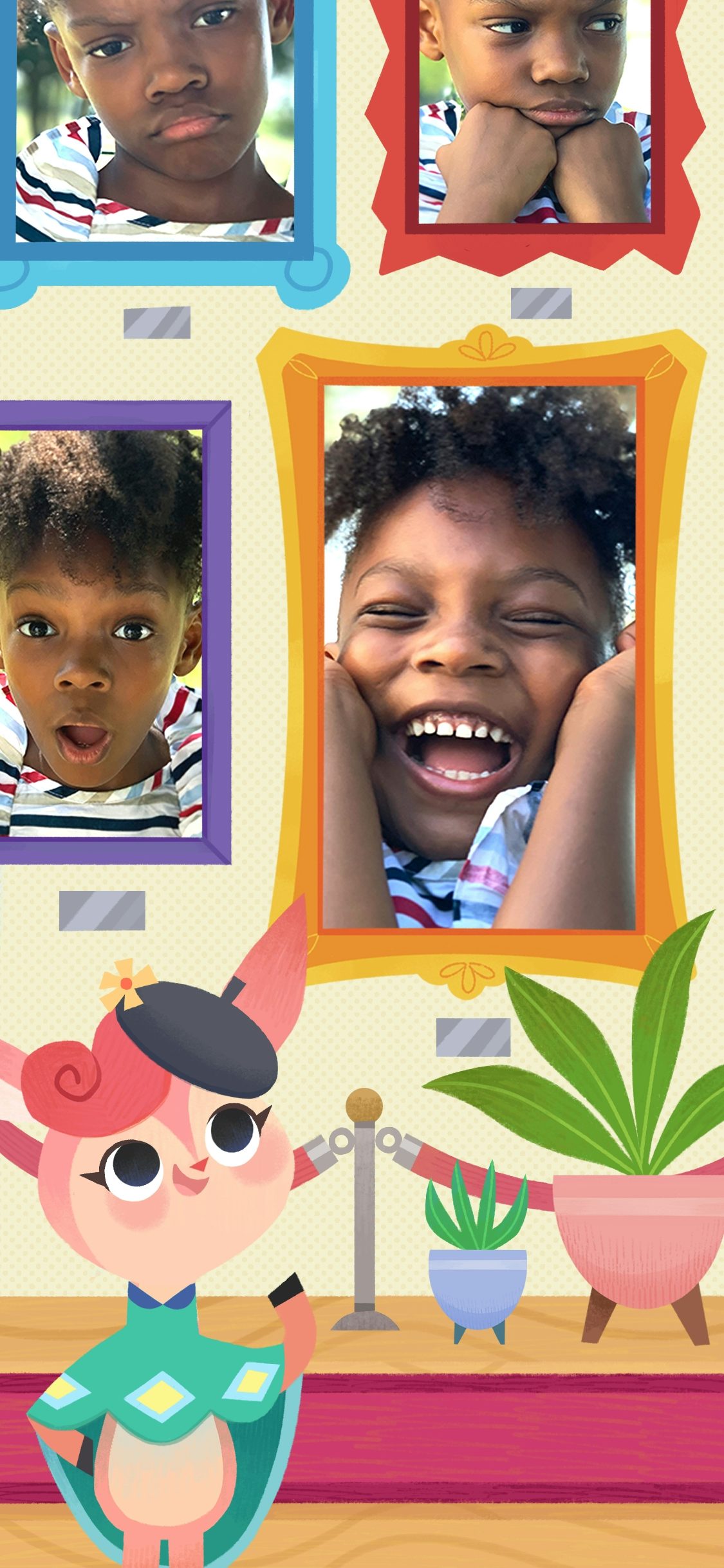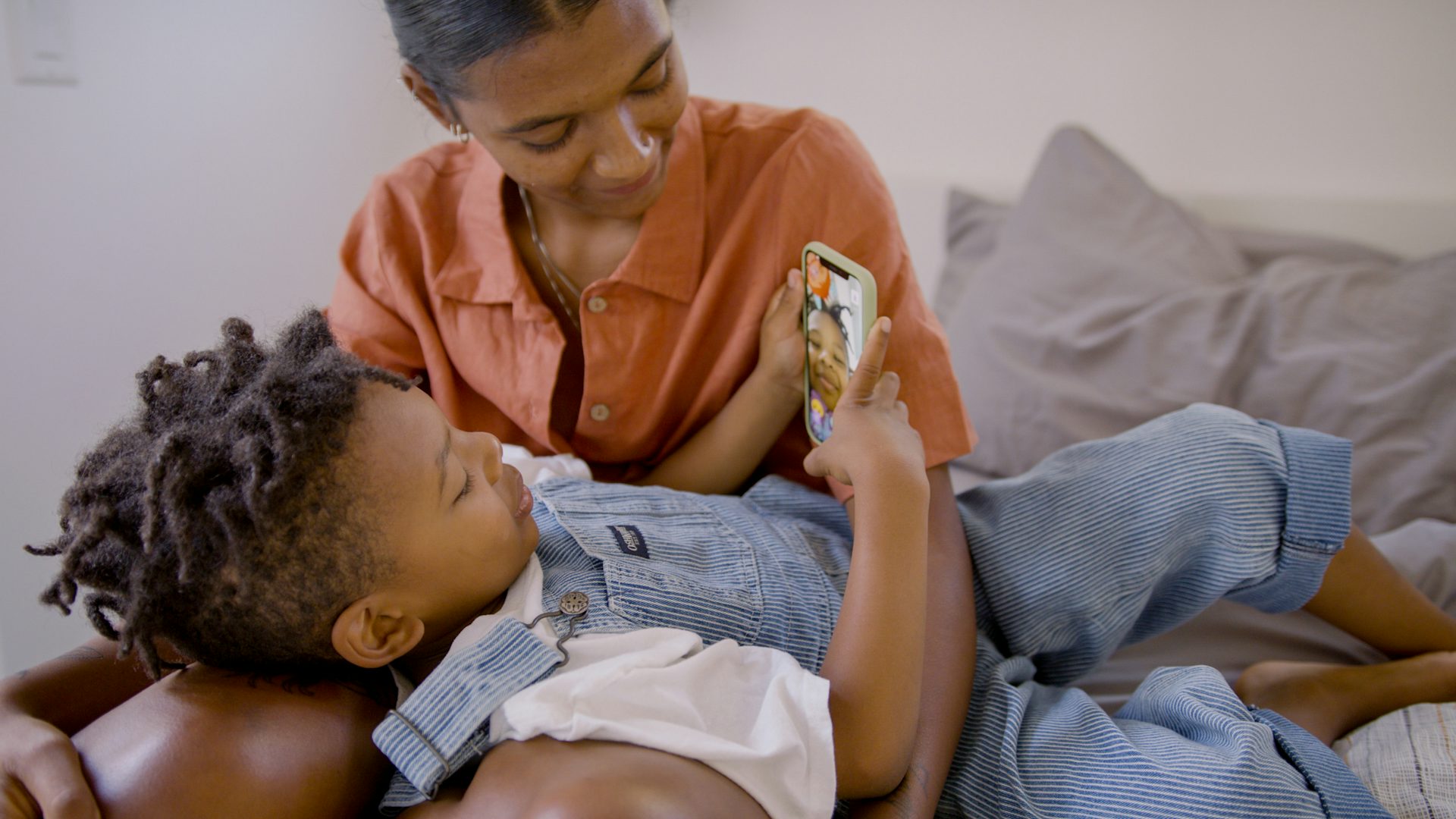Can design save kids from ‘bad’ screen time?
As apps for children proliferate, questions are being asked about the dangers of the screen. But new app OK Play is using design and creativity to build a more positive relationship between kids and tech
The app, which launched in September this year, is made by the OK Company – which was set up by a team of creatives, scientists and entrepreneurs, including execs from TikTok, Headspace and Snap. It’s designed to be a shared experience between children and parents, offering up a series of activities to support children’s creative and emotional development, as well as teach them how to make stories, snap pictures and take films. The OK Company describes its mission as nudging culture in “a kinder, more accepting direction”.
The idea for OK Play came after Chris Ovitz, one of the founders, watched a documentary about Mr Rogers, the host of US kids TV programme Mister Rogers’ Neighborhood. He was inspired by the way Rogers had used the TV screen to “reach millions of families and talk to them about emotions, especially the tough ones”, as he told Business Insider, and spied an opportunity to do something similar for the smartphone and tablet screen – which is becoming an increasingly contentious environment for many parents.

By the end of 2019, the OK Company had raised $3.5m of funding, with Lego Ventures also recently announcing investment. For Ovitz, what sets the app apart is the way it brings children and parents into the experience together, but also the way it engages with them on an emotional level. The same can’t be said for the many hundreds of other children’s apps, which are often little more than digital junk food.
Dr. Colleen Russo Johnson, a child development researcher and one of the co-founders of the OK Company, describes the app as “a catalyst for parent-child play”. “We wanted to build something that uses technology and media as a tool for good, to encourage real-world play whether through the device, or the play ideas you get from the device,” she told CR.
Johnson is very aware of the conversation around screen time, and has long been interested in how smartphones and tablets can be used in more positive ways. As she points out, the touch screen creates a level of interactivity that can enhance learning, but also offers new creative opportunities. It’s easy for developers or designers to rely on digital ‘sparkle’, but making something that’s visually engaging doesn’t necessarily translate into a positive experience for children. She believes that what makes OK Play work so well is its combination of creativity and science – drawn from the latest research around children’s media and technology, as well as the social and emotional field.
According to her, the scientists are often brought in at the end of the creative process, but at the OK Company all disciplines work collaboratively. Both the science and creative team are free to independently pitch ideas, although Johnson says ultimately the creativity has to win out.
“The truth is if kids aren’t engaged and excited and having fun, the learning goals are meaningless,” she explains. “That’s what people often forget when they’re creating educational materials – they think ‘this is what science says’, but if it’s not fun then you’ve already lost the kid and the educational moment. It’s more important to me that the creative side wins out. The learning is meaningless without that.”

As the OK Company team has developed its raft of activities for the OK Play app, it’s also learnt a few things about what kind of design works best for children. First of all, says Johnson, companies should use their content to talk ‘up’ to kids. “Anyone creating content for children should treat them as the most important audience,” she says. “It’s not just making a kid version of something. We have to treat them with the respect they deserve.”
That means moving away from the bright primary colours that dominate children’s toys and games. OK Play instead uses a cleaner, more sophisticated palette that can be cheerful and happy when needed, but adjusted when the app is discussing emotions such as anger, sadness or disappointment.
The app’s creative team beta tested multiple types of characters as well, using children’s and parents’ feedback to tweak their appearance, and their voices. Activities have also been tested to see what works best – with Johnson saying that short videos, which they call sparks, seem to be more effective than audio-only content. “What we’ve landed on is this beautiful conversation that’s like a lightly edited storybook, with videos that are two to three minutes long,” she says.
Content has been designed to appeal to what Johnson describes as the “maker generation”, meaning all activities end in a moment that can be saved – for example by making a video, mixing a song, or going on a scavenger hunt for pictures.

“It brings together real and digital play in a way that other apps don’t,” she explains. “That’s one of the ways we can use the device to enhance the real world. We bring them together and get children to enjoy the art of photography and taking videos or acting things out. We have storymakers where you’re part of the story, or that get people to act out parts of their favorite book. It’s a way of enhancing and capturing play and putting kids in the director’s seat.”
And while it’s clear that OK Play is spending longer on both the design and science side than many other apps, Johnson emphasises that it’s hard work. The process takes time, and it requires investment – which, according to her, means if parents want to access higher quality apps for their children, they’re most likely going to have to buy a subscription (OK Play is $9.99 for a month, or $59.99 for a year).
However, while there’s an additional cost associated with some apps – something that TV doesn’t always have – the medium has some unique benefits. “The process is so iterative, and we can change things in real time – whereas if you make a TV show you can’t adapt,” says Johnson. “We can even keep up with real current events. If something big happens in the news that we want to support children around, we can have that next week in the app.”
Long term, she hopes that apps like OK Play, and their more creative approach to screen time, can counteract the stigma that surrounds it – which feels like a very current issue as people around the world try to balance work and family life more than ever. “I worry that the word screen time has morphed over time and I’m trying to bring it back but reframe it,” she says.




